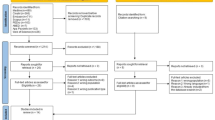Abstract
Literacy is a tool to analyze a problem in different scenarios. A skill that can give a person/business/stakeholders insight to differentiate and explain and how to follow a particular protocol. In the healthcare ecosystem, eHealth literacy is very critical for the promotion of a product/service when it comes to the patient for following or selection of a care plan or doctor level for communication at patient level as well as at a technological level. Young people are more familiar with digital tools. When it comes to an older population, we observe resistance because of weak cognitive skills or suspicious behaviour towards technologies that exist and culture variance. Different stakeholders should consider the level of literacy, deep dig into technological advancement while making policies for the Health care ecosystem and cultural aspects for technological promotion to ensure eHealth solutions to be followed. A business model should be improvised concerning eHealth literacy and culture literacy in different countries in the health care sector for the promotion of a particular assistive technology product/device/service. This paper highlights the various essential aspects concerning eHealth literacy, cultural influences its importance while following a specific plan of care and its adherence at the patient as well as the policy-making level for the healthcare ecosystem.



Similar content being viewed by others
References
Norman, C. D., & Skinner, H. A. (2006). eHealth literacy: Essential skills for consumer health in a networked world. Journal of Medical Internet Research,8(2), e9.
EPF draft position paper on eHealth. http://webcache.googleusercontent.com/search?q=cache:fxdFgAgbU2YJ:www.eu-patient.eu/contentassets/c8ff38cc3ed24717a8c4a4f6e9106579/ehealth-draft-position-paper-2015_for-consultation.docx+&cd=9&hl=en&ct=clnk&gl=dk.
W. H. Organization (WHO). (2013). Health literacy. The solid facts. http://publichealthwell.ie/search-results/health-literacy-solid-facts?&content=resource&member=572160&catalogue=none&collection=none&tokenscomplete=true.
Halwas, N., Griebel, L., & Huebner, J. (2017). eHealth literacy, Internet and eHealth service usage: A survey among cancer patients and their relatives. Journal of Cancer Research and Clinical Oncology,143(11), 2291–2299.
Athanasopoulou, C., et al. (2017). Internet use, eHealth literacy and attitudes toward computer/internet among people with schizophrenia spectrum disorders: A cross-sectional study in two distant European regions. BMC Medical Informatics and Decision Making,17, 136.
Chung, S., Park, B. K., & Nahm, E.-S. (2018). The Korean eHealth Literacy Scale (K-eHEALS): Reliability and validity testing in younger adults recruited online. Journal of Medical Internet Research,20(4), e138.
Vicente, M. R., & Madden, G. (2017). Assessing eHealth skills across Europeans. Health Policy and Technology,6(2), 161–168.
Norman, C. D., & Skinner, H. A. (2006). eHEALS: The eHealth literacy scale. Journal of Medical Internet Research,8(4), e27.
Koh, H. K., et al. (2012). New federal policy initiatives to boost health literacy can help the nation move beyond the cycle of costly ‘crisis care’. Health Affairs,31(2), 434–443.
van Gemert-Pijnen, J. E. W. C., et al. (2011). A holistic framework to improve the uptake and impact of eHealth technologies. Journal of Medical Internet Research,13(4), e111.
http://eur-lex.europa.eu/LexUriServ/LexUriServ.do?uri=OJ:C:2006:146:0001:0003:EN:PDF.
Towards a National eHealth/Telehealth Strategy for Pakistan. http://webcache.googleusercontent.com/search?q=cache:HyYaZB6RzkkJ:www.lead.org.pk/lead/Publications/DP%252029-%2520Pakistan%25E2%2580%2599s%2520Experiences%2520in%2520Telehealth%2520The%2520Way%2520Forward%2520for%2520a%2520National%2520TelehealtheHealth%2520Programme.pdf+&cd=1&hl=en&ct=clnk&gl=dk.
Zhang, X., Yu, P., Yan, J., Ton, I., & Spil, A. M. (2015). Using diffusion of innovation theory to understand the factors impacting patient acceptance and use of consumer e-health innovations: A case study in a primary care clinic. BMC Health Services Research,15, 71.
Skär, L., & Söderberg, S. (2018). The importance of ethical aspects when implementing eHealth services in healthcare: A discussion paper. Journal of Advanced Nursing,74(5), 1043–1050.
Ministry of Finance | Government of Pakistan. http://www.finance.gov.pk/survey_1819.html.
NATIONAL VISION 2016–2025. https://webcache.googleusercontent.com/search?q=cache:AXtjPcF7CD8J:https://www.unicef.org/pakistan/media/1276/file/National%2520Vision%25202016-2025.pdf+&cd=2&hl=en&ct=clnk&gl=dk.
Kierkegaard, P. (2015). Governance structures impact on eHealth. Health Policy and Technology,4(1), 39–46.
WHO. Global diffusion of eHealth: Making universal health coverage achievable. WHO. http://www.who.int/goe/publications/global_diffusion/en/.
Currie, W. L., & Seddon, J. J. (2014). A cross-national analysis of eHealth in the European Union: Some policy and research directions. Information and Management,51(6), 783–797.
Kim, J. A. (2010). Telehealth in the developing world. Healthcare Informatics Research,16(2), 140–141.
6 Prevention of Disability Associated with Chronic Diseases and Aging, & Institute of Medicine. (1991). Disability in America: Toward a national agenda for prevention. Washington, DC: The National Academies Press. https://doi.org/10.17226/1579.
Anwar, S., & Prasad, R. (2018). Framework for future telemedicine planning and infrastructure using 5G technology. Wireless Personal Communications,100(1), 193–208.
Social dynamics. Wikipedia (22-Aug-2018).
Skyrms, B. (2014). Social dynamics. Oxford: Oxford University Press.
eHealth Startup Guide for business success A practical introductory manual on business modeling and routes to market. http://webcache.googleusercontent.com/search?q=cache:d7MbQxiXmhwJ:digitalezorg.nl/digitale/uploads/2015/04/RESOURCE-GET-on-Track.pdf+&cd=1&hl=en&ct=clnk&gl=dk.
Business Models for eHealth—Final Report—European Innovation Partnership—European Commission. European Innovation Partnership (14-June-2012). https://ec.europa.eu/eip/ageing/library/business-models-ehealth-final-report_en.
European Telemedicine Market | Size | Share | Forecast. (2017–2022). https://www.mordorintelligence.com/industry-reports/european-telemedicine-market-industry.
Anwar, S. (2018). 5G and telemedicine: A business ecosystem relationship within CONASENSE paradigm (pp. 41–57). Conasense Book.
Anwar, S. (2017). Smart pharma: Towards efficient healthcare ecosystem. In O. Fratu, N. Militaru, & S. Halunga (Eds.), Lecture notes of the institute for computer sciences, social-informatics and telecommunications engineering. Cham: Springer.
Anwar, S. (2016). 5G, an approach towards future telemedicine. Aarhus: National Danish Database, River Publisher.
Fogg, B. J. (2003). Persuasive technology: Using computers to change what we think and do. Amsterdam: Elsevier.
Meyer, E. (2016). The culture map (INTL ED): Decoding how people think, lead, and get things done across cultures. Hachette: PublicAffairs.
Lindgren, P. (2016). The business model ecosystem. Journal of Multi Business Model Innovation and Technology,4(2), 1–50.
Home. vCare project. (04-Jan-2017). https://vcare-project.eu/.
Tropea, P., et al. (2019). Rehabilitation, the great absentee of virtual coaching in medical care: Scoping review. Journal of Medical Internet Research. https://doi.org/10.2196/12805.
Author information
Authors and Affiliations
Corresponding author
Additional information
Publisher's Note
Springer Nature remains neutral with regard to jurisdictional claims in published maps and institutional affiliations.
Rights and permissions
About this article
Cite this article
Anwar, S., Prasad, R. & Chowdhry, B.S. Literacy and Socio-dynamics Cues Insights Decision Analytics for Care Plan Adherence. Wireless Pers Commun 113, 1597–1613 (2020). https://doi.org/10.1007/s11277-020-07400-4
Published:
Issue Date:
DOI: https://doi.org/10.1007/s11277-020-07400-4




